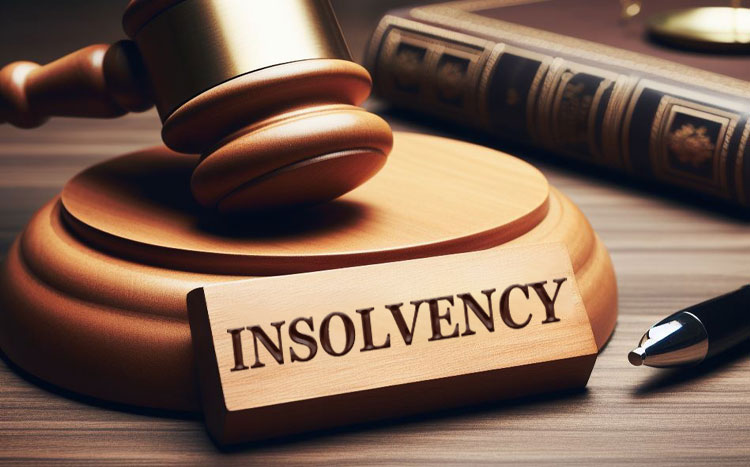Buying or selling a home is one of life’s biggest milestones — and it comes with a fair share of paperwork, legal steps, and deadlines. This is where conveyancing comes in. While the term may sound complex, understanding it is essential to ensuring your property transaction runs smoothly from start to finish.
In this complete guide, we’ll explain what conveyancing is, why it matters, the step-by-step process, and how to choose the right conveyancer for your needs. Whether you’re a first-time buyer or a seasoned seller, this article will help you navigate the legal side of property transfers with confidence.
What Is Conveyancing?
Conveyancing is the legal process of transferring property ownership from one person to another. It involves preparing, verifying, and lodging all necessary documents to make sure the sale or purchase is legally valid and binding.
When you buy or sell a property, you’re not just exchanging money for a house — you’re transferring legal ownership rights. This process protects both parties, ensuring the buyer gets a clear title and the seller receives payment as agreed.
Typically, a conveyancer or property solicitor handles this process on your behalf, managing the complex legal requirements and helping you avoid costly mistakes.
Why Conveyancing Matters in Property Transactions
Conveyancing is more than just paperwork — it’s a safeguard for your investment. For buyers, it ensures the property is free from legal issues like encumbrances, caveats, or unpaid rates. For sellers, it ensures that the sale is executed correctly and legally, protecting you from future disputes.
Without proper conveyancing, you risk facing serious problems — from hidden debts on the property to invalid ownership transfers. Engaging a licensed professional ensures all legal obligations are met, and every step of the transaction is handled properly.
The Conveyancing Process Step-by-Step
While conveyancing may vary slightly between states or territories, the process generally follows these steps:
1. Pre-Contract Stage
The conveyancer reviews the draft contract of sale, checking for errors, special conditions, and compliance with property laws. They ensure everything — from property boundaries to zoning — aligns with legal requirements.
2. Contract Signing
Once both parties agree to the terms, contracts are signed and exchanged. This step makes the agreement legally binding, pending any cooling-off periods that may apply.
3. Pre-Settlement Searches
Your conveyancer conducts vital searches to confirm there are no outstanding rates, disputes, or encumbrances on the property title. These searches protect you from inheriting someone else’s legal or financial problems.
4. Mortgage and Finance
If you’re buying a property with a loan, your conveyancer works closely with your lender to ensure funds are ready by settlement day. They also confirm that mortgage documents are correctly prepared.
5. Settlement
On settlement day, your conveyancer coordinates with the other party’s legal representative and your bank to transfer funds, pay duties, and register the property title. Once this step is complete, the buyer officially becomes the new owner.
See more: How Chamberlain’s Law Challenges Traditional Jurisprudence
6. Post-Settlement
Your conveyancer ensures all final documents are lodged with the Land Titles Office and that the property title is transferred to your name. They also notify relevant authorities, such as council and water services, about the ownership change.
The Role of a Conveyancer or Property Solicitor
A conveyancer or property solicitor acts as your legal representative throughout the property transfer process. Their main responsibilities include:
- Preparing and reviewing contracts of sale
- Conducting property title searches
- Handling deposit and settlement funds
- Liaising with banks, real estate agents, and other parties
- Ensuring compliance with state property laws
In short, they protect your interests, ensuring the sale or purchase is legally sound and stress-free.
How Long Does Conveyancing Take?
The conveyancing timeline typically ranges from 4 to 8 weeks, depending on factors such as financing approval, property type, and state regulations.
However, delays can occur if there are title discrepancies, slow lender approvals, or incomplete documents. Having an experienced conveyancer helps minimize these risks and keeps the process on track.
Typical Conveyancing Costs and Fees
Conveyancing costs vary depending on whether you’re buying or selling and the complexity of the transaction.

Generally, conveyancing fees range from $800 to $2,000, which includes:
- Professional service fees
- Title and property searches
- Government disbursements and stamp duty
- Settlement arrangements
Always request a detailed quote upfront to understand exactly what’s included and avoid hidden costs later.
Common Pitfalls to Avoid During Conveyancing
Even with professional help, there are a few pitfalls to watch out for:
- Rushing contract signing before getting legal advice
- Failing to check title details or zoning restrictions
- Ignoring finance conditions in your contract
- Not understanding settlement obligations or penalties
Taking your time to review each document carefully and communicating regularly with your conveyancer can save you from major headaches down the line.
Online Conveyancing: A Modern Approach
With digital transformation sweeping the legal industry, online conveyancing has become an increasingly popular option.
Through secure online platforms, buyers and sellers can now complete much of the process remotely — from electronic document signing to real-time progress tracking and digital settlements.
Online conveyancing offers convenience, transparency, and faster turnaround times. Just make sure you choose a licensed, reputable provider that uses secure systems for handling sensitive data.
Tips for Choosing the Right Conveyancer
Choosing the right professional can make or break your property experience. Here are some key tips:
- Check qualifications and licensing — Make sure they’re registered to practice in your state or territory.
- Ask for clear pricing — Avoid hidden fees by requesting an upfront written quote.
- Look for experience — Choose someone who specializes in your type of property (e.g., residential, commercial, or off-the-plan).
- Read reviews and testimonials — See what past clients have to say about their service quality and responsiveness.
- Prioritize communication — A good conveyancer keeps you updated at every stage and explains things in plain language.
Conclusion
Conveyancing is a vital step in every property transaction — protecting both buyers and sellers from legal risks and financial surprises. Whether you’re purchasing your dream home or selling an investment property, working with a qualified conveyancer or property solicitor ensures that everything runs smoothly and legally.
With modern online conveyancing options, the process has become more accessible, efficient, and transparent than ever before. By understanding each step and choosing the right professional, you can enjoy peace of mind knowing your property transfer is in safe hands.
FAQS
A conveyancer manages all legal aspects of transferring property ownership. They handle contracts, conduct title searches, liaise with lenders, and ensure all settlement documents are in order — making sure the sale or purchase is legally valid and smooth for both parties.
Typically, conveyancing takes 4 to 8 weeks, depending on contract conditions, property type, and financing arrangements. Delays can occur due to title issues or slow approvals, so working with an experienced conveyancer helps keep everything on schedule.
Conveyancing fees vary by location and property type but generally range between $800 and $2,000. Costs cover professional services, legal searches, and disbursements. Always ask for a detailed quote upfront to avoid surprises.
Yes. A conveyancer ensures that property contracts are fair, legally compliant, and protect your interests. Attempting a property transfer without professional help may lead to costly legal mistakes or delays.








